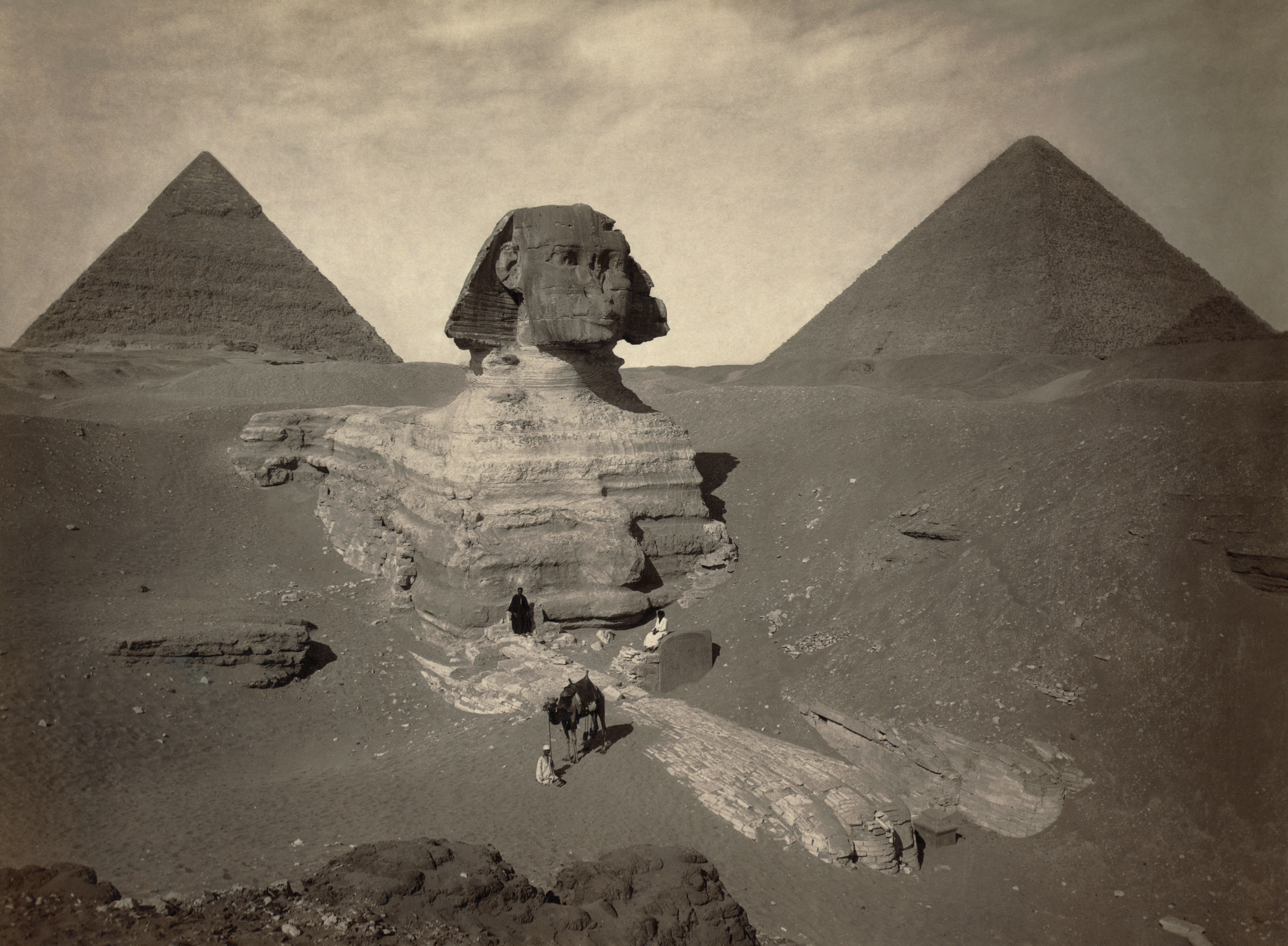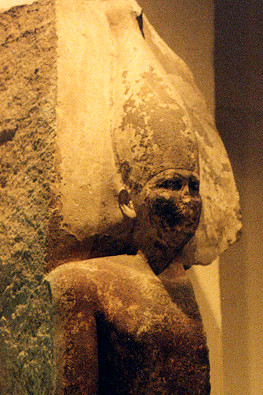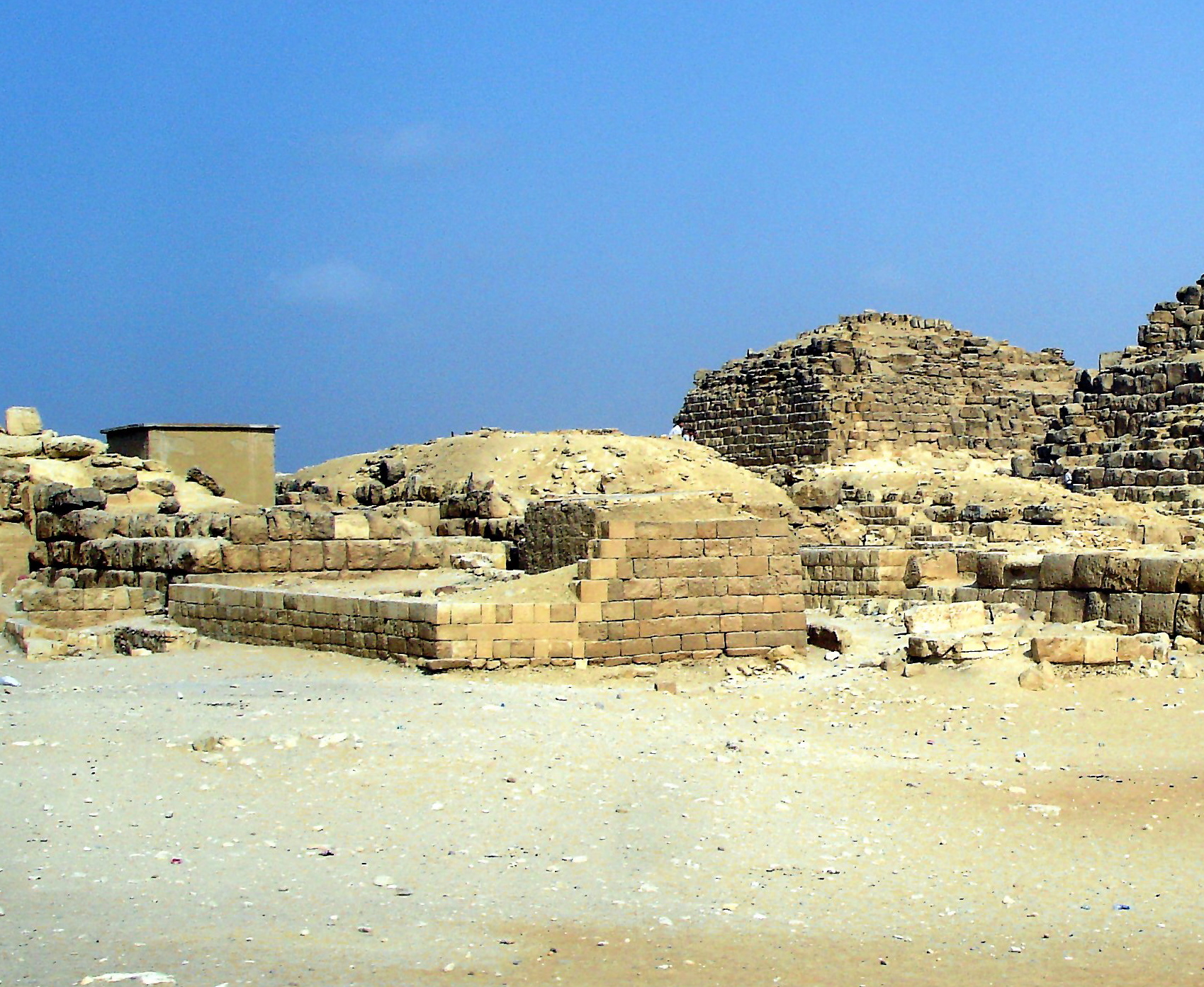|
Djedefhor
Djedefhor or Hordjedef (died 2530 BC) was a noble Egyptian of the 4th Dynasty. He was the son of King Khufu and his name means "Enduring Like Horus". Biography Djedefhor was a son of Khufu and half-brother of kings Djedefre and Khafre., p.58 Queen Meritites I is named in the tomb G 7220 of Djedefhor and it is possible she is his mother. He is mentioned on an inscription in Wadi Hammamat, his name appears in a cartouche, written after the names of Khufu, Djedefre and Khafre, preceding the name of another of his brothers, Baufra. There is no evidence that either Djedefhor or Baufra ruled as a king, even though only kings' names were written in cartouches during the 4th dynasty. The '' Teachings of Djedefhor'', a document of which only fragments remain, is attributed to him. Djedefhor seems to have been deified after his death. The wisdom text by Djedefhor was written as advice to his son, Prince Auibra. Titles Djedefhor's titles were: Translation and indexes from Dilwyn J ... [...More Info...] [...Related Items...] OR: [Wikipedia] [Google] [Baidu] |
Djedi
Djedi (also Dedi or Djedi of Djed-Sneferu) is the name of a fictional ancient Egyptian magician appearing in the fourth chapter of a story told in the legendary Westcar Papyrus. He is said to have worked wonders during the reign of king (pharaoh) Khufu ( 4th Dynasty). Literary person Djedi appears only in the fourth story of the ''Westcar Papyrus'' – there is no archeological or historical evidence that he existed. Nevertheless, he is an object of great interest for historians and Egyptologists, since his magic tricks are connected to later cultural perceptions of the personality of king Khufu. Djedi is described as a commoner of extraordinary age, endowed with magical powers and talented in making prophecies. The wonder of Djedi According to the ''Westcar Papyrus,'' prince Djedefhor brings up the story of Djedi. He stands before his father, king Khufu, and says: “There is only speaking of miracles which happened a long time ago, something known by past generations only. T ... [...More Info...] [...Related Items...] OR: [Wikipedia] [Google] [Baidu] |
Khufu
Khufu or Cheops (died 2566 BC) was an ancient Egyptian monarch who was the second pharaoh of the Fourth Dynasty of Egypt, Fourth Dynasty, in the first half of the Old Kingdom of Egypt, Old Kingdom period (26th century BC). Khufu succeeded his father Sneferu as king. He is generally accepted as having commissioned the Great Pyramid of Giza, one of the Seven Wonders of the Ancient World, but many other aspects of his reign are poorly documented.Thomas Schneider: ''Lexikon der Pharaonen''. Albatros, Düsseldorf 2002, , page 100–104. The only completely preserved portrait of the king is a Khufu Statuette, small ivory figurine found in a temple ruin of a later period at Abydos, Egypt, Abydos in 1903. All other reliefs and statues were found in fragments, and many buildings of Khufu are lost. Everything known about Khufu comes from inscriptions in his necropolis at Giza pyramid complex, Giza and later documents. For example, Khufu is the main character noted in the Westcar Papyrus ... [...More Info...] [...Related Items...] OR: [Wikipedia] [Google] [Baidu] |
Instruction Of Hardjedef
The ''Instruction of Hardjedef'', also known as the ''Teaching of Hordedef'' and ''Teaching of Djedefhor'', belongs to the didactic literature of the Egyptian Old Kingdom. It is possibly the oldest of all known Instructions, composed during the 5th Dynasty according to Miriam Lichtheim, predating ''The Instructions of Kagemni'' and '' The Maxims of Ptahhotep''. Only a few fragments from the beginning of the text have survived on a handful of New Kingdom ostraca and a Late Period wooden tablet. The first lines of the text establish Prince Djedefhor, Khufu's son, as the author of the ''Instruction''. In antiquity Djedefhor enjoyed a reputation for wisdom, his name appears in the Westcar Papyrus The Westcar Papyrus (inventory-designation: ''P. Berlin 3033'') is an ancient Egyptian text containing five stories about miracles performed by priests and magicians. In the papyrus text, each of these tales are told at the royal court of King ..., and according to the ''Harper's l ... [...More Info...] [...Related Items...] OR: [Wikipedia] [Google] [Baidu] |
Giza Pyramid Complex
The Giza pyramid complex (also called the Giza necropolis) in Egypt is home to the Great Pyramid of Giza, Great Pyramid, the pyramid of Khafre, and the pyramid of Menkaure, along with their associated pyramid complexes and the Great Sphinx of Giza, Great Sphinx. All were built during the Fourth Dynasty of Egypt, Fourth Dynasty of the Old Kingdom of Egypt, Old Kingdom of ancient Egypt, between . The site also includes several temples, cemeteries, and the remains of a workers' village. The site is at the edge of the Western Desert (Egypt), Western Desert, approximately west of the Nile, Nile River in the city of Giza, and about southwest of the Downtown Cairo, city centre of Cairo. It forms the northernmost part of the Memphite Necropolis, Pyramid Fields of the Memphis and its Necropolis UNESCO World Heritage Site, inscribed in 1979. The pyramid fields include the Abusir, Saqqara, and Dahshur pyramid complexes, which were all built in the vicinity of Egypt's ancient capital of ... [...More Info...] [...Related Items...] OR: [Wikipedia] [Google] [Baidu] |
Baufra
Baufra (also read as Bauefre and Ra-bau-ef) is the name of an alleged son of the ancient Egyptian king (pharaoh) Khufu from the 4th Dynasty of the Old Kingdom. He is known from a story in the Papyrus Westcar and from a rock inscription at Wadi Hammamat. He is neither contemporarily nor archaeologically attested, which makes his historical figure disputable to scholars up to this day. Identity It is possible that Baufra is identical to either Horbaef or Babaef I.Aidan Dodson & Dyan Hilton: ''The Complete Royal Families of Ancient Egypt''. Thames & Hudson, London 2004, , page 50-61. Baufra in Wadi Hammamat In the inscription in Wadi Hammamat Baufra´s name is written in a royal cartouche, which brings up some confusion within egyptology, since Baufra is neither contemporarily nor archaeologically attested. It might be that he was worshipped as a local patronate of the mine workers. A similar phenomenon can be observed with prince Hordjedef, whose name is also erroneous ... [...More Info...] [...Related Items...] OR: [Wikipedia] [Google] [Baidu] |
Prince Djedi
Djedi was an Egyptian prince who lived during Fourth Dynasty of Egypt. He was a son of Prince Rahotep and Nofret, possibly a grandson of king Sneferu and nephew of king Khufu. He had two brothers and three sisters. W. M. Flinders Petrie: ''Medum'', London 1892, plate XV (online He is depicted in the tomb chapels of his parents and bears there the title "King's Acquaintance". In an ancient Egyptian tale, "Khufu and the Magicians", mention is made of a magician called Djedi, and it is possible that this mythical person was inspired by the real prince Djedi, Khufu's nephew. See also * Westcar Papyrus The Westcar Papyrus (inventory-designation: ''P. Berlin 3033'') is an ancient Egyptian text containing five stories about miracles performed by priests and magicians. In the papyrus text, each of these tales are told at the royal court of King ... References {{Authority control Princes of the Fourth Dynasty of Egypt 3rd-millennium BC births 3rd-millennium BC deaths ... [...More Info...] [...Related Items...] OR: [Wikipedia] [Google] [Baidu] |
Dilwyn Jones
Dilwyn is a village in Herefordshire, England located about from the city of Hereford and from its nearest town, Leominster. It is situated on the northern edge of a broad valley that stretches from the River Wye through to Leominster. Running through the valley, south of the village, is the Stretford Brook whilst to the north are the rivers Arrow and Lugg. Dilwyn civil parish includes the hamlets of Sollers Dilwyn, Little Dilwyn, The Haven, Hill Top, The Hurst, Headland, Bearton, Bidney, Henwood, Stockmoor and Stockingfield amongst others. There are over 200 dwellings spread throughout the of the parish. The population in 2001 was 758. The 12th-century village church of St Mary is a grade I listed building. It was realigned from the original Norman setting, the south arcade surviving with buttresses in the southern part of the old nave. The chancel contains unique example of ballflowers decoration in the chancel, and with the north transept dates from 1310 to 1330. The r ... [...More Info...] [...Related Items...] OR: [Wikipedia] [Google] [Baidu] |
Menkaure
Menkaure or Menkaura (; 2550 BC - 2503 BC) was a king of the Fourth Dynasty of Egypt during the Old Kingdom. He is well known under his Hellenized names Mykerinos ( by Herodotus), in turn Latinized as Mycerinus, and Menkheres ( by Manetho). According to Manetho, he was the throne successor of king Bikheris, but according to archaeological evidence, he was almost certainly the successor of Khafre. Africanus (from Syncellus) reports as rulers of the fourth dynasty Sôris, Suphis I, Suphis II, Mencherês (=Menkaure), Ratoisês, Bicheris, Sebercherês, and Thamphthis in this order. Menkaure became famous for his tomb, the Pyramid of Menkaure, at Giza and his statue triads, which showed him alongside the goddess Hathor and various regional deities. Family Menkaure was the son of Khafre and the grandson of Khufu. A flint knife found in the mortuary temple of Menkaure mentioned a king's mother Khamerernebty I, suggesting that Khafre and this queen were the parents of Me ... [...More Info...] [...Related Items...] OR: [Wikipedia] [Google] [Baidu] |
Fourth Dynasty Of Egypt
The Fourth Dynasty of ancient Egypt (notated Dynasty IV) is characterized as a "golden age" of the Old Kingdom of Egypt. Dynasty IV lasted from to c. 2498 BC. It was a time of peace and prosperity as well as one during which trade with other countries is officially documented. The Fourth Dynasty heralded the height of the pyramid-building age. The peaceful rule of the Third Dynasty of Egypt, Third Dynasty allowed artistic expressions to flourish. Building experiments done by King Sneferu led to the evolution of mastaba tombs into the smooth sided pyramids like those seen on the Giza Plateau. No other period in Egyptian history equaled the accomplishments achieved during the Fourth Dynasty.Egypt: Land and Lives of the Pharaohs Revealed, (2005), pp. 80–90, Global Book Publishing: Australia Rulers Summary of Listed Kings Sneferu Sneferu, lauded as "Bringer of Beauty", "Master of All Justice", and "Ruler of Lower and Upper Nile", was the first pharaoh of the fourt ... [...More Info...] [...Related Items...] OR: [Wikipedia] [Google] [Baidu] |
Egyptian Museum
The Museum of Egyptian Antiquities, commonly known as the Egyptian Museum (, Egyptian Arabic: ) (also called the Cairo Museum), located in Cairo, Egypt, houses the largest collection of Ancient Egypt, Egyptian antiquities in the world. It houses over 120,000 items, with a representative amount on display. Located in Tahrir Square in a building built in 1901, it is the list of largest art museums, largest museum in Africa. Among its masterpieces are Pharaoh Tutankhamun's treasure, including its iconic Mask of Tutankhamun, gold burial mask, widely considered one of the best-known works of art in the world and a prominent symbol of ancient Egypt. History The Egyptian Museum of Antiquities contains many important pieces of ancient Egyptian history. It houses the world's largest collection of Pharaonic antiquities. The Egyptian government established the museum built in 1835 near the Azbakeya, Ezbekieh Garden and later moved to the Cairo Citadel. In 1855, Maximilian I of Mexico, ... [...More Info...] [...Related Items...] OR: [Wikipedia] [Google] [Baidu] |
Giza East Field
The East Field is located to the east of the Great Pyramid of Giza and contains cemetery G 7000. This cemetery was a burial place for some of the family members of Khufu. The cemetery also includes mastabas from tenants and priests of the pyramids dated to the 5th and 6th Dynasty. Porter, Bertha and Moss, Rosalind L. B., ''Topographical Bibliography of Ancient Egyptian Hieroglyphic Texts, Reliefs, and Paintings. Volume III. Memphis. Part I. Abû Rawâsh to Abûṣîr.'' 2nd edition, revised and augmented by Jaromír Málek, The Clarendon Press, Oxford 1974PDF from The Giza Archives, 29,5 MBRetrieved February 10, 2017. The East Field consists of the three Queen's pyramids and a number of mastabas labeled Cemetery G 7000. George Andrew Reisner constructed a timeline for the construction of the East Field. The first two Queen's Pyramids, G 1a and G 1b, were likely started in year 15–17 of Khufu Khufu or Cheops (died 2566 BC) was an ancient Egyptian monarch who was the ... [...More Info...] [...Related Items...] OR: [Wikipedia] [Google] [Baidu] |
Hierakonpolis
Nekhen (, ), also known as Hierakonpolis (; , meaning City of Hawks or City of Falcons, a reference to Horus; ) was the religious and political capital of Upper Egypt at the end of prehistoric Egypt ( 3200–3100 BC) and probably also during the Early Dynastic Period ( 3100–2686 BC). Located in Upper Egypt about 100 kilometers south of the modern-day city of Luxor, Nekhen has been the subject of extensive archeological research over the past one and half centuries, and has yielded a large number of artifacts that give a greater understanding to this period of ancient Egyptian history. The city was the center of cult worship of the god Horus, who is said to have his origins in Nekhen as its tutelary deity. Tombs, temples, breweries, houses, and other structures have all been discovered that date back to the predynastic era. The oldest known tomb with painted decoration, known as the Painted Tomb, is located in Nekhen and is thought to date to c. 3500–3200 BC. It shares disti ... [...More Info...] [...Related Items...] OR: [Wikipedia] [Google] [Baidu] |





